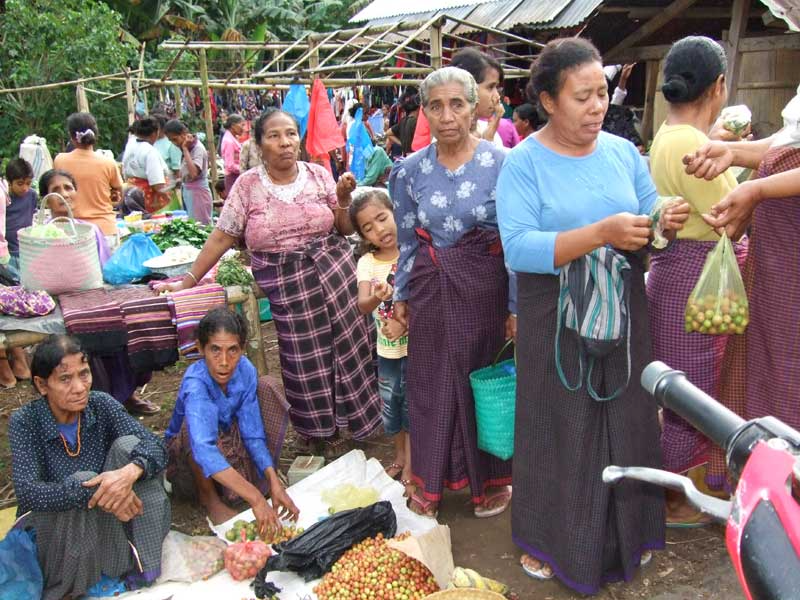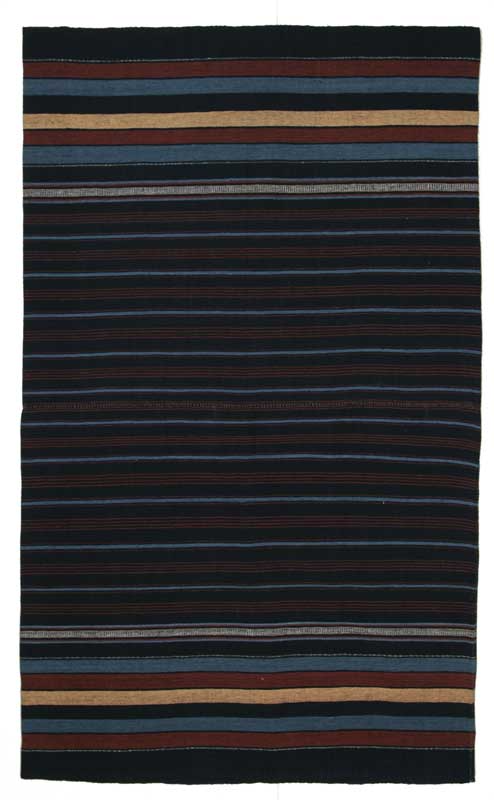The Simple but Profound Textiles of Adonara

For years I have passed by the island of Adonara on my way to Lembata
At least twice a year I make the trip to Lembata to meet with weavers’ groups. We always take a ferry that leaves from Larantuka, Flores and pass the islands of Adonara and Solor on our way. This June was the first time I actually visited the island of Adonara. To me there is a remarkable difference between Lembata and Adonara, Lembata being dry and barren and Adonara being more fertile.
The hardship on Adonara is related to the absence of the men. A high percentage of the men from Adonara work as laborers in Malayasia. An organization called PEKKA (The Women Headed Household Empowerment Program) works to support women who have been left by their husbands, sometimes for a few years and sometimes forever. (Please look at the March 2009 field notes report about Threads of Life working with PEKKA).

Most of the men from Adonara are working as laborers in Malaysia

Tied threads containing motifs from Ile Ape (top right) ready to be woven into an Adonara textile
Adonara still continues their tradition of making textiles. What is interesting to me is that almost all of the weavers on Adonara believe that they may not make ikat motifs as part of the structure of their traditional textiles. If a weaver were to tie an ikat motif for her work, she would become blind. What is even more interesting is that the weavers of Adonara have a relationship with weavers in Ile Ape on Lembata whereby Adonara weavers may buy and weave into their own textiles sections of ikat motifs from the Ile Ape weavers!
There is one exception to this tradition within the Tua Wolo clan whereby weavers are allowed to put an ikat motif in their textiles but only if they wear that textile themselves. These textiles would not be allowed to be worn by another clan or be sold.

Yulita Benga Puli from the clan Tua Wolo is one of the weavers allowed to make ikat motifs

Natural dyed textiles using handspun cotton in Ile Boleng
We found weavers who are supported by PEKKA and are still using natural dyes in the Ile Boleng area. The weavers here not only use natural dyes but also handspun cotton. We were surprised at how active these weavers are compared to other areas we passed through on Adonara. Threads of Life is now buying natural-dye textiles from these weavers to support their on going work.
In Ile Boleng different types of textiles are used for different ceremonies. One type of textile is called Heba’a Brokanand is used by a woman when she has is carrying her first child. The function of this textile is to protect the child against negative influences.

Heba'a Brokan textile is worn by a woman who is carrying her first child. The cloth is believed to have protective qualities

Weaving and related ceremonies are still important to the local communityof the people on Adonara
Other textiles are used for marriage ceremonies and also for the ceremonies for new traditional houses. An important ceremony that is still recognized today is called Reka Wuun. This ceremony is performed every year before beginning to undertake the red dye process. Each clan of weavers perform this ceremony individually – a woman from one clan may not join the ceremony of another clan. These textiles and ceremonies are evidence that the weavers of Ile Boleng remain committed to the continuation of their culture.

